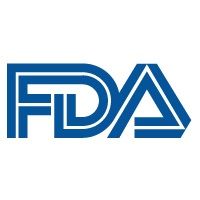Article
FDA Approves Nasal Spray Naxolone
Author(s):
An easy-to-use nasal-spray version of naxolone hydrochloride (Narcan) got rapid FDA approval. It is available only by prescription, but requires no medical training to administer.

A nasal spray version of naxolone hydrochloride, an agent emergency medical personnel have long used to quickly reverse an opioid overdose, got rapid US Food and Drug Administration approval today.
Marketed as Narcan, the product is distributed by Adapt Pharma, Inc., of Radnor, Pennsylvania.
The drug works to stop or reverse the effects of an opioid overdose from both prescription opioids like oxycodone and morphine or illegal drugs like heroin. According to the FDA, overdose deaths, driven largely by prescription drug overdoses, are now the leading cause of injury death in the US.
“Combating the opioid abuse epidemic is a top priority for the FDA,” said Stephen Ostroff, MD, the acting FDA commissioner. “We cannot stand by while Americans are dying," he said, adding that the rescue drug does not " solve the underlying problems of the opioid epidemic."
The nasal spray could replace the injectable form since it eliminates the hazard of getting stuck by a needle.The FDA noted that "There has been widespread use of unapproved naloxone kits that combine an injectable formulation of naloxone with an atomizer." Narcan nasal spray does not require assembly and delivers a consistent, measured dose when used as directed.
The drug is sprayed into one nostril while the patient is lying on his or her back, and can be repeated if necessary.
The FDA review and approval were done on a fast-track basis.
The American Medical Association issued a statement praising the FDA for its quick action.
According to the FDA, the National Institute on Drug Abuse played a critical role in the development of Narcan nasal spray as well, forming a public-private partnership by designing and conducting the clinical trials required to determine that the intranasal formulation delivered naloxone as quickly and as effectively as an injection. NIDA then worked with its private sector partners to obtain FDA approval.
“This easy-to-use intranasal formulation will no doubt save many lives,” said Nora Volkow, MD, the director of NIDA.
Increasing access to and the use of naloxone is part of a plan that US Health and Human Services put forward in March to address the opioid epidemic.
The drug has side effects since in addicts it triggers opioid withdrawal symptoms. Those include body aches, diarrhea, tachycardia, increased blood pressure, nausea and fever.





